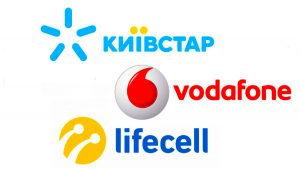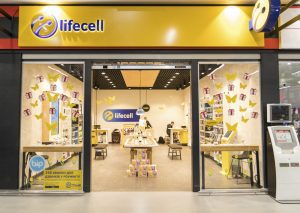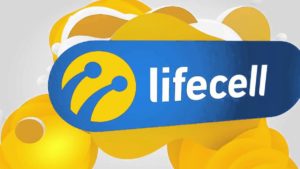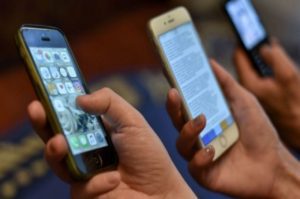
Ookla (the United States), the developer of Speedtest service, has said that Kyivstar mobile communication operator is Ukraine’s Speedtest Awards Winner for mobile network speed, according to the Ookla Speedtest report posted on the Speedtest website.
According to the report, in 2019, the company made over 3.15 million test counts for subscribers of all mobile operators. In particular, the total number of test counts in the Kyivstar network was 1.53 million with average download speed of 22.02 Mbps (17.94 Mbps in 2018) and average upload speed of 12.88 Mbps (8.99 Mbps).
Some 0.973 million test counts were made in the Vodafone Ukraine network with average download speed of 19.37 Mbps and average upload speed of 11.16 Mbps (14 Mbps and 6.63 Mbps in 2018), and in the lifecell network 0.583 million test counts were made with average download speed of 19.42 Mbps and average upload speed of 9.24 Mbps (16.64 Mbps and 6.69 Mbps).
According to Ookla, Kyivstar’s Speed Score was 20.31, lifcell’s – 17.77 and Vodafone Ukraine’s – 17.93. Speed Score incorporates a measure of each provider’s download and upload speed to rank network speed performance.
A total of 566,300 unique devices launched the Speedtest application in Ukraine, including iPhone 7 (27,600 test counts), Redmi Note 5 Pro (25,700 test counts), Redmi Note 4 (20,700 test counts), iPhone 6s (20,500 test counts), and iPhone X (18,100 test counts).
At the same time, in Kharkiv, according to Ookla, the speed of mobile Internet is on average higher than in Kyiv. So, Kyivstar’s Speed Score in this city was 25.08, while in Kyiv it was 19.79. Speed Score of lifecell in Kharkiv was 22.17, and in Kyiv was 18.06.
At the same time, the Speed Score of Vodafone Ukraine in Kharkiv was 16.87, while in Kyiv it was 18.88.

Mobile communications operator lifecell in 2019 saw UAH 1.114 billion of net loss, which was 14.4% less than in 2018 (UAH 1.3 billion), according to financial statements of the company. The operator’s revenue grew by 13.6%, to UAH 5.984 billion.
Earnings before interest, taxes, depreciation and amortization (EBITDA) rose by 17.4%, to UAH 3.243 billion, and EBITDA margin grew by 1.8 percentage points (pp), to 54.2%.
“In 2019, lifecell achieved positive dynamics in all key indicators, such as the subscriber base and revenue, Internet traffic consumption and the number of LTE users. Our company continues leading in the penetration of smartphones in the network – 80% in the fourth quarter of 2019,” Chief Executive Officer of lifecell Ismet Yazici said.
The operator’s capital investments in 2019 decreased 75.6%, to UAH 1.895 billion.
The active subscriber base of the company over the past year expanded by 1.4% to 7.4 million customers, the total number of subscribers in the operator’s network decreased 10.1%, to 8.9 million subscribers. At the same time, the average revenue per user (ARPU) increased 26.2%, to UAH 54, while the ARPU of the active subscriber base grew by 25.3%, to UAH 71.80.
The number of voice minutes per month used by a subscriber in 2019 increased 2.8%, to 149 minutes.
In the fourth quarter of 2019, operator’s revenue grew by 9.9%, to UAH 1.56 billion (versus UAH 1.42 billion in the fourth quarter of 2018). This growth in the company is explained by an increase in profits from the use of mobile Internet thanks to the constantly growing consumption of traffic in the network.
“The share of the company’s revenue generated by digital services and lifecell products in 2019 is 10%. Moreover, compared with 2018, the income from digital services of the company grew by 32%,” lifecell said.
In the fourth quarter of 2019, the operator’s EBITDA decreased 24.4% year-over-year, to UAH 0.819 billion, EBIDTA margin fell by 24.0 pp, to 52.5%.
“Also in the fourth quarter, lifecell began to capitalize on the cost of using radio frequencies in accordance with IFRS16, and the overall impact, including retrospective adjustments for the previous quarters of 2018, was reflected in the fourth quarter of 2018,” the company said in the report.
In 2020, lifecell plans to invest in the deployment of its LTE network.

Lifecell mobile operator in July-September 2019 increased its net loss by 82.3% compared to the same period in 2018, to UAH 338.3 million, the company has said.
According to the interim report, the operator’s income in the third quarter increased by 11.8%, to UAH 1.529 billion, EBITDA by 32.9%, to UAH 810.5 million. At the same time, the EBITDA margin increased by 8.4 percentage points, to 53%.
The Lifecell active subscriber base for July-September 2019 decreased by 9.2% compared to the third quarter of 2018 and amounted to 6.9 million users, while the total base by 10.9%, to 9 million.
The average revenue per user (ARPU) of the active subscriber base increased by 26%, to UAH 74.7.
The operator’s capital investments for the specified period amounted to UAH 547.7 million, which is 34.4% less than for the same period in 2018.
Compared to the second quarter of this year, the active subscriber base in the third quarter rose by 100,000 people, revenue by 3.2%, EBITDA by 1.5%, net loss by 15.4%, and capital investments by 56.5%.

The mobile communications operator lifecell in April-June 2019 saw a rise of 41.8% in net loss year-over-year, to UAH 293.2 million.
According to financial report posted on its official website, lifecell’s revenue grew by 16.1%, to UAH 1.48 billion.
Earnings before interest, taxes, depreciation and amortization (EBITDA) rose by 41.7%, to UAH 798.8 million. EBITDA margin grew by 9.7 percentage points, to 53.9%.
The increase is linked to growth in profit from consumption of mobile Internet that resulted of growing number of users of 4.5G network, the company said.
In the second quarter of 2018, the active subscriber base of the lifecell operator decreased by 12.8% on an annual basis, to 6.8 million subscribers.
Active three month ARPU (average revenue per user per month) increased by 27.3% by this period and amounted to UAH 53.1.
Capital investment in April-June totalled UAH 350 million that is 78.8% less year-over-year.
The penetration of smartphones in the operator’s network at the end of the second quarter was 73%.
Lifecell is the third largest mobile operator in Ukraine.

The mobile communications operator lifecell in January-March 2019 increased net loss by 49.94%, to UAH 267.2 million compared with UAH 178.2 million in January-March 2018, according to the financial statement of the parent company, Turkcell (Turkey) posted on its official website. According to the report, the operator’s revenue in the first quarter increased 17.2%, to UAH 1.42 billion, and earnings before interest, taxes, depreciation and amortization (EBITDA) – 61.5%, to UAH 815.5 million. At the same time, EBITDA margin increased 15.8 percentage points, to 57.6%.
Revenue of lifecell (Ukraine) grew by 17.2% year on year in 2019 in local currency, mainly thanks to increased revenues from mobile data transfer with an increase in 4.5G users and data users, the Turkcell said in the report.
The active subscriber base of lifecell for the first three months of 2019 decreased 10.4% compared with the first quarter of 2018 and amounted to 6.9 million users. At the same time, the average revenue per user (ARPU) of the active subscriber base increased 29.8%, to UAH 66.7.
Capital investments of the operator for the specified period amounted to UAH 357.8 million, which is 86.2% less than in the same period of 2018.
According to the report, the number of 4.5G users in the first quarter of 2019 was 36% of the total number of users of mobile data, and the penetration rate of smartphones by the end of March reached 77% (70% as of the end of the first quarter of 2018).
The lifecell operator is the third largest operator of mobile communications in Ukraine.

Ookla (the United States), the developer of Speedtest service, has said that Kyivstar mobile communication operator is Ukraine’s Speedtest Awards Winner for mobile network speed, according to the Ookla Speedtest report posted on the Speedtest website.
According to the report, in 2018, the company made over 4.73 million test counts for subscribers of all mobile operators. In particular, the total number of test counts in the Kyivstar network was 2.2 million with average download speed of 17.94 Mbps and average upload speed of 8.99 Mbps.
Some 1.43 million test counts were made in the Vodafone Ukraine network with average download speed of 14 Mbps and average upload speed of 6.63 Mbps, and in the lifecell network 1.1 million test counts were made with average download speed of 16.64 Mbps and average upload speed of 6.69 Mbps.
According to Ookla, Kyivstar’s Speed Score was 16.32, lifcell’s – 15.10 and Vodafone Ukraine’s – 12.74. Speed Score incorporates a measure of each provider’s download and upload speed to rank network speed performance.
A total of 632,300 unique devices launched the Speedtest application in Ukraine, including Redmi Note 4 (33,100 test counts), iPhone 7 (27,000 test counts), Redmi 4X (25,300 test counts), iPhone 6s (24,600 test counts), and iPhone 6 (18,800 test counts).
According to the Ookla report, in February 2019, Speed Score for mobile networks in Ukraine was 17.10, and the country ranked 93rd among 137 countries in the Speedtest rating (51st among 177 countries in terms of fixed-line Internet speed).